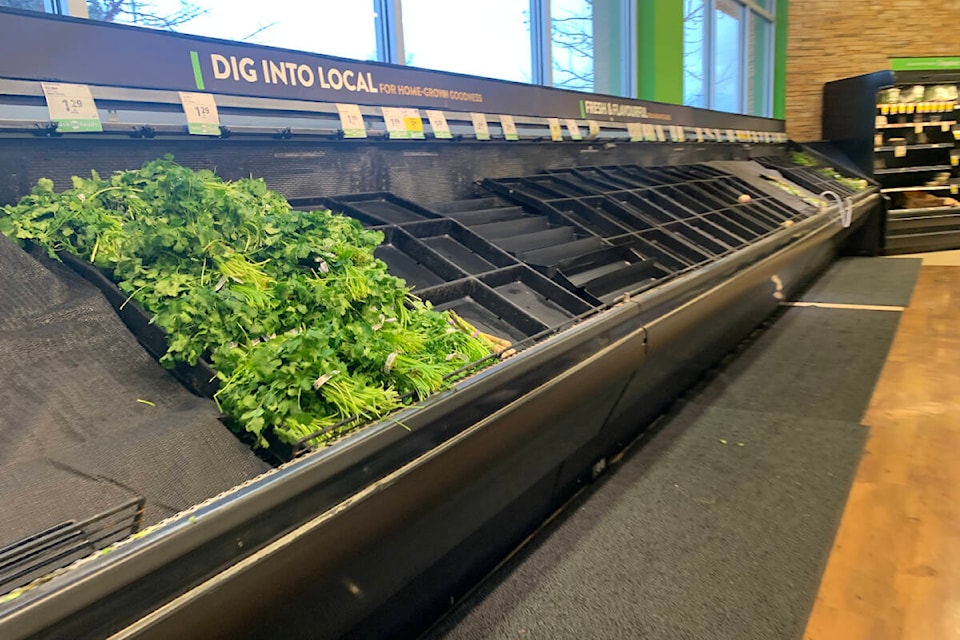| Kathleen Rodgers |
Bare shelves. Desperate-looking shoppers. Endless lineups to get into grocery stores. And perhaps most frightening of all, the “out of gas” signs.
On the heels of the ongoing global pandemic and the devastating forest fires of this past summer, we are collectively struggling with our third major crisis in two years in British Columbia and these signs of panic buying are now all too familiar.
We all know we shouldn’t panic. That point is clearly made on social media: some of us plead with others not to participate in panic-buying, some want to explain it away (“maybe they are buying for other people”) and some others angrily chastise the panic buyers. In reality though, a part of us all can relate to the temptation to join the panic and fill our carts to the brim.
So, why do we panic?
Historical crises, from the Spanish Influenza of the 1920s to the more recent Cuban Missile and OPEC Crises, have all produced panic buying. And social psychologists have long understood that one of strongest explanations for panic buying is fear of the unknown. Uncertainty produces emotions like anxiety and fear, emotions known to influence shopping behaviour. Importantly, fear encourages people to buy more because it decreases stress and gives us a sense of security. Panic buying is how we protect ourselves and it’s how we cope.
But even more important than uncertainty, social psychologists attribute panic to our fear of perceived risk. In other words, it doesn’t matter how bad the crisis actually is; we are reacting to how bad we think it is. And this is why rumours, hysteria and misinformation that are fostered by social media are an important part of the current puzzle about why we panic. In our current situation, a lack of reliable information about the opening of highways, the long-term availability of food and the level of danger, combined with conflicting and often incorrect information on social media has heightened insecurity. In one recent instance on a local Facebook page, in response to a simple post about the availability of milk, more than two hundred users provided conflicting information, increasing confusion about which information to trust.
Anyone observing social media pages over the last couple of days however, has also seen that social media has the potential to foster community solidarity in times of crisis. The community of Chilliwack has joined together to ensure the displaced, the elderly and precarious families have food and a place to sleep. Pages like Chilliwack 24 Hour Marketplace link retailers and farmers with people who need food and other services. And neighbours are reaching out to each other with offers of meals and support. These are the same patterns that emerged during the early days of COVID-19. And this is wonderful to observe. But it is not enough. Knowing what we know about uncertainty, panics and panic-buying, we need to prepare for future crises a more reliable system of food security than ad-hoc social media groups can provide.
So, what do we do?
When a crisis ensues we need to receive a clear and consistent message: food will be available and there is a system in place to ensure it.
In 2020, the United Nations Food and Agricultural Organization conducted a study of the management of urban food systems during the COVID-19 crisis. They observed that in many instances, the health crisis became a food security crisis. Their key message was that cities and local governments have the potential to encourage collaboration between local food actors (producers, retailers and distributors). They recommend the development of “Urban Food Governance” in advance of future events that provide co-ordinated efforts and clear communication.
We are fortunate in Chilliwack to be surrounded by a bounty of farms and farmers.
A co-ordinated food security system to ensure the distribution of food during periods of turmoil, especially to the most vulnerable, will only make Chilliwack better. A scuffle over the last container of milk during a crisis is a reflection that the citizens know there is no such system.
A collective plan means we don’t have to rely on our own individual responses.
For now, let’s be sympathetic to the feelings of panic. Later we need to replace that with a plan.
Kathleen Rodgers, PhD, is an associate professor of sociology at the University of the Fraser Valley.
